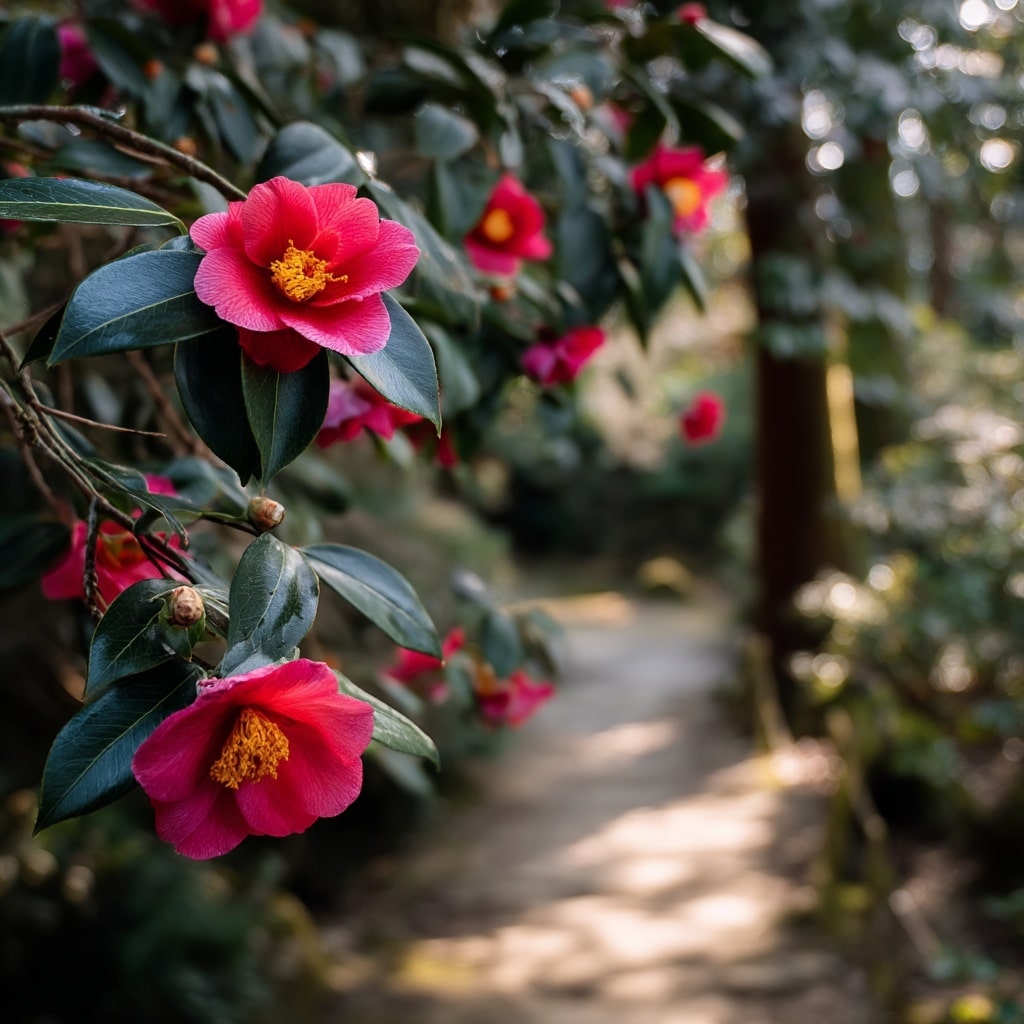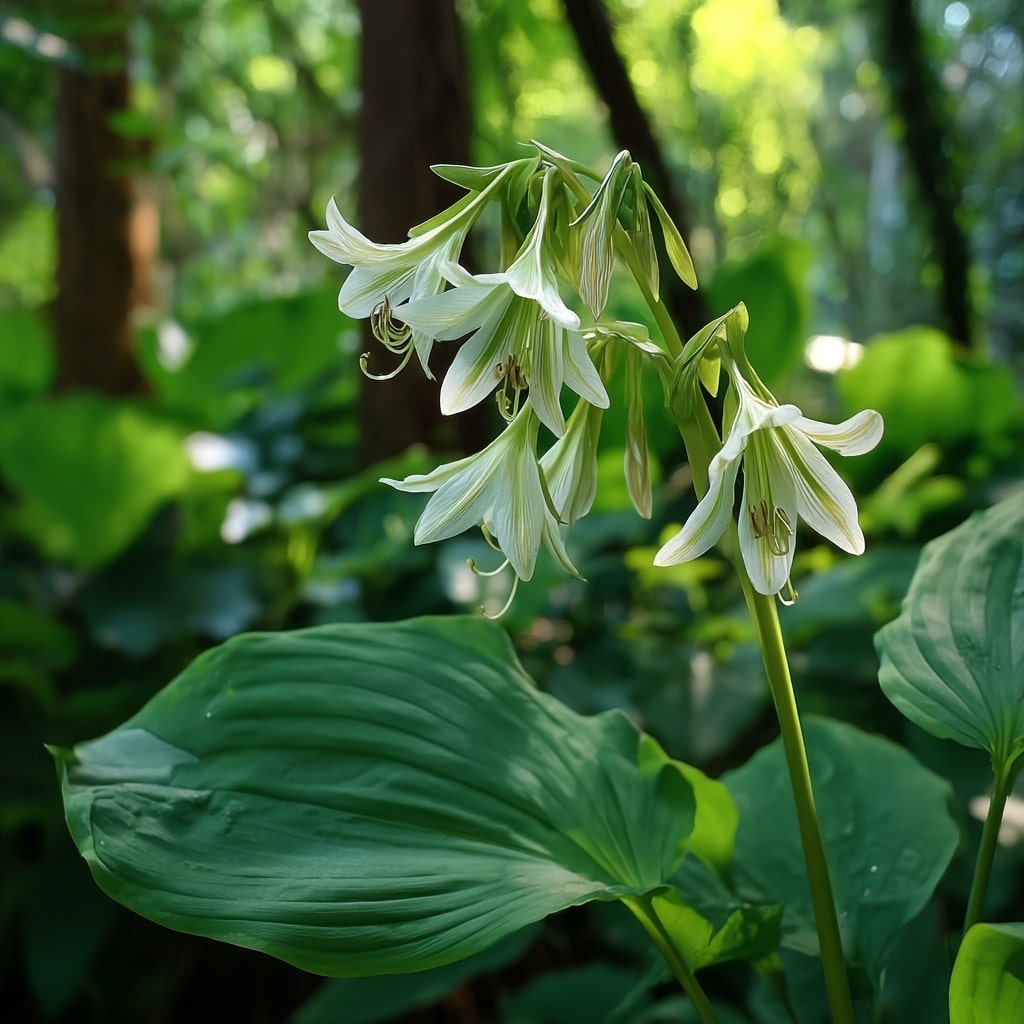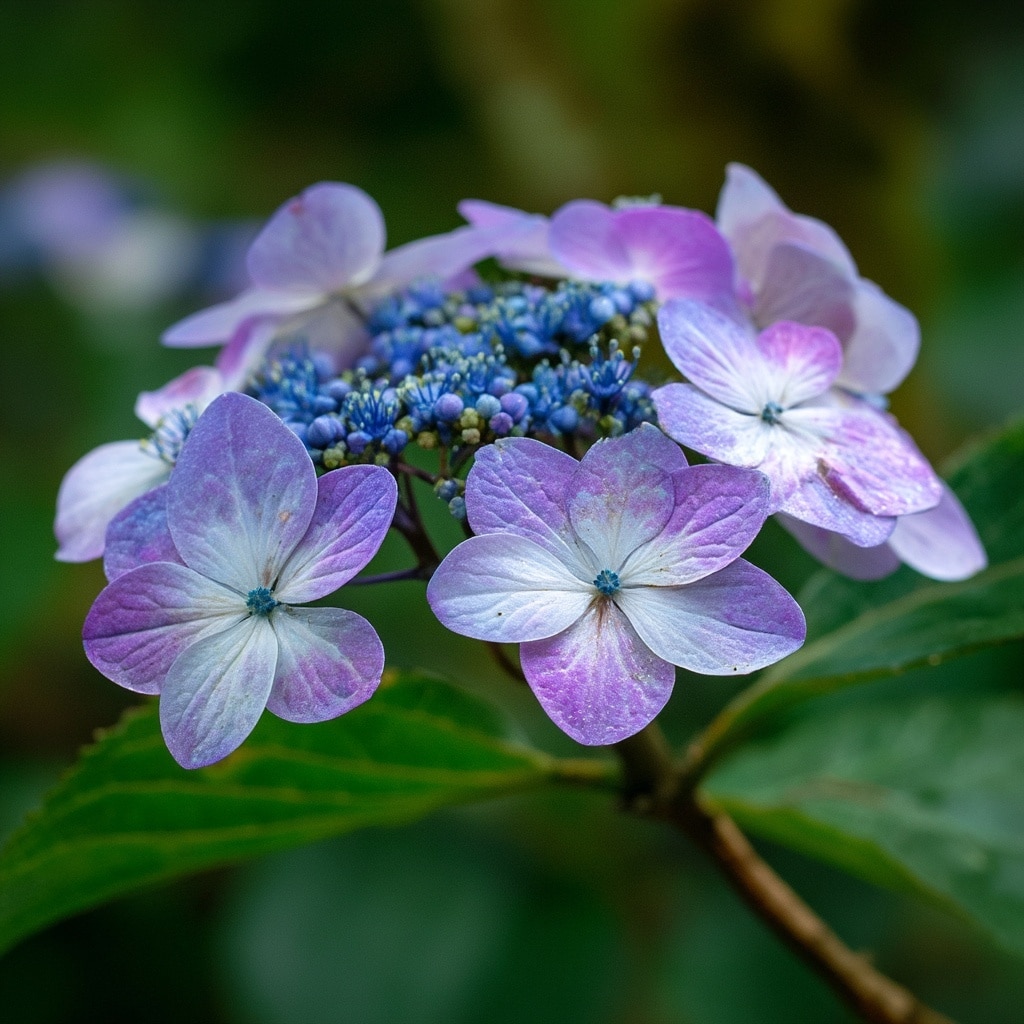Japanese flowers are more than just a visual delight—they’re deeply rooted in the country’s cultural identity, often used to express emotions when words fall short. From ancient poetry to modern-day celebrations, flowers hold symbolic weight across Japan’s seasons and traditions. Known collectively through the practice of Hanakotoba (the language of flowers), each bloom carries a unique message. Whether representing love, pride, or resilience, these blossoms are part of everyday life and ritual. In this article, we’ll highlight five beloved Japanese flowers and uncover the rich cultural meanings behind them, blending beauty with deeper understanding.
Table of Contents
1. Lacecap Hydrangea (Gaku)
Among the most iconic Japanese flowers, the Lacecap Hydrangea—known in Japan as Gaku-ajisai—is admired for both its beauty and deeper meaning. Native to Japan, this flower features a striking contrast: delicate outer petals in shades of purple and white surround a cluster of small blue florets in the center. The name Gaku, meaning “frame,” perfectly describes this unique structure.
In Hanakotoba, the Lacecap Hydrangea symbolizes pride. Traditionally, it is gifted to someone the giver admires and holds in high regard. The flower’s layered composition is also seen as a metaphor for depth of character—elegant on the outside, with hidden complexity within. Blooming in the rainy season, it adds vibrant color to otherwise grey landscapes, making it a seasonal favorite in temple gardens and rural trails.
2. Japanese Buttercup (Ranunculus japonicus)

Another cherished gem among Japanese flowers, the Japanese Buttercup—Yamabuki-sō in Japanese—is a wild perennial known for its cheerful golden hue. Found from Hokkaido to Okinawa, this flower thrives in open fields and mountain slopes, often blanketing landscapes with its vibrant yellow petals during spring and early summer.
With five rounded petals and a subtle green center, the Japanese Buttercup may appear simple, but its symbolism is rich. In Hanakotoba, it represents joy and radiance—the kind of happiness that arrives quietly but lingers long after. Its leaves, said to resemble horse hooves, add a touch of folklore to its identity, reinforcing its deep connection to the natural world and rural life in Japan.
Though modest in size, the Japanese Buttercup’s brightness offers an uplifting presence, reminding observers of small, quiet happiness in everyday life.
3. Japanese Apricot Blossom (Prunus mume / Ume)

One of the earliest blooming Japanese flowers, the Ume—or Japanese apricot blossom—holds a sacred place in Japan’s cultural heritage. Appearing in late winter before most other blossoms, its pale pink to white petals are a symbol of resilience and renewal. With a fragrance reminiscent of sweet honey, these blossoms not only beautify gardens but also carry historical and poetic significance dating back over a thousand years.
In Hanakotoba, the Ume flower stands for elegance, faithfulness, and a pure heart. Traditionally planted near homes and temples, it was often celebrated in ancient waka poetry as a flower of quiet strength. The Ume’s ability to bloom in the cold symbolizes perseverance through hardship—a trait admired in Japanese philosophy and reflected in seasonal festivals like Ume Matsuri, held nationwide.
Beyond symbolism, the fruit of the Prunus mume tree is used to make umeboshi (pickled plums) and umeshu (plum wine), showing how this flower enriches both spirit and table.
4. Camellia Sasanqua (Sazanka)

Among Japanese flowers, the Camellia Sasanqua—Sazanka in Japanese—is beloved for its late bloom, gracing gardens from late autumn through winter. With petals in shades of deep pink, red, or pure white, this flower brings color to Japan’s colder months. Native to southern regions like Kyushu and Shikoku, the Sazanka is often found in temple courtyards and mountain villages, symbolizing quiet grace.
In Hanakotoba, the Camellia Sasanqua carries meanings of love, devotion, and even graceful farewell. One unique trait of this flower is that it drops its petals one by one, unlike the Camellia Japonica which falls whole—this poetic detail enhances its association with gentle, dignified endings.
Culturally, it also reflects the bond between two lovers: the flower represents the woman, while the green leaves symbolize the man who supports and protects her. Even in loss, the connection remains—a sentiment echoed in Japanese art and seasonal traditions.
5. Cardiocrinum cordatum (Ubagagiku)

Less widely known but deeply rooted in local tradition, the Cardiocrinum cordatum—called Ubagagiku in Japanese—is a rare and striking plant found in Japan’s forested mountain regions. Also known as the “Heartleaf Lily” due to its large, heart-shaped leaves, it blooms with tall stalks of pale green to creamy white, trumpet-shaped flowers.
Though not as mainstream as other Japanese flowers, its cultural symbolism is quietly profound. In folklore, this flower is associated with wisdom, humility, and the aging spirit, as its name loosely translates to “old woman’s chrysanthemum.” This link to age and quiet strength gives it a respected place in the realm of Hanakotoba, often seen as a tribute to elders and ancestral memory.
Blooming in shaded, serene environments, Cardiocrinum cordatum reflects a quieter side of Japanese floral heritage—one that values endurance, inner beauty, and the cycles of life.
Conclusion
Japanese flowers are more than ornamental—they’re storytellers of a culture steeped in symbolism, emotion, and seasonal awareness. From the joyful brightness of the Japanese Buttercup to the quiet resilience of the Ume, each bloom carries centuries of meaning rooted in daily life, literature, and tradition. Whether gifted to express pride, love, or inner strength, these flowers remind us that nature often speaks the words we cannot. Planting or appreciating these blooms isn’t just an act of gardening—it’s a way of connecting to something timeless.





